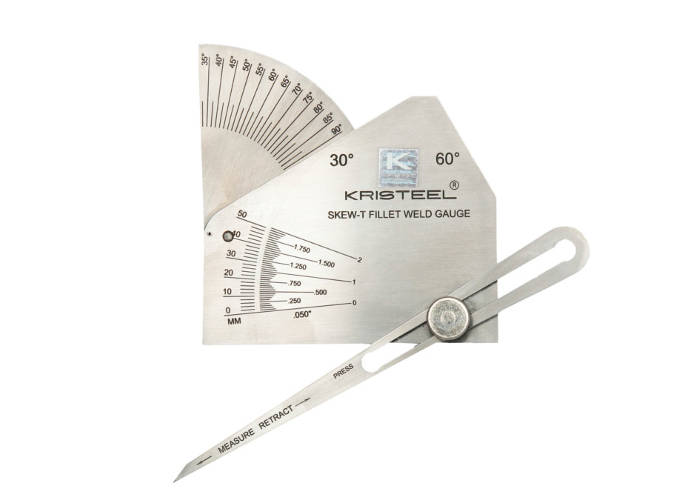Gauge Fillet Weld Specs: Making Certain Top Quality and Conformity
The Ultimate Guide to Fillet Weld High Quality Control: Making Sure Strength and Durability in Your Welded Joints
In the world of welding, ensuring the strength and sturdiness of fillet welds is extremely important for the integrity of welded joints. As we begin on this expedition of fillet weld top quality control, we will certainly reveal important elements that influence weld stamina, dig right into reliable assessment approaches, and discuss methods for protecting against usual weld issues.
Importance of Fillet Weld Quality Control
Ensuring proper fillet weld high quality control is extremely important in assuring the architectural honesty and durability of bonded elements in different industries. Fillet welds are typically used in architectural steelwork, bridges, stress vessels, pipelines, and other essential framework where the toughness of the weld is vital to general security and performance. Quality assurance actions such as aesthetic assessments, non-destructive testing, and adherence to welding procedures aid recognize prospective problems like lack of blend, incomplete penetration, damaging, or extreme support.
Secret Factors Impacting Weld Toughness
Attaining ideal weld strength calls for cautious factor to consider of different vital aspects that influence the stability and longevity of the bonded joint. The first vital factor appertains joint preparation, which entails cleaning the base metals to get rid of any type of contaminants that might damage the weld. Additionally, the fit-up of the joint is important to guarantee appropriate infiltration and combination of the filler product.
The option of the suitable welding technique and specifications additionally plays a significant function in determining weld strength. Aspects such as warmth input, travel speed, and electrode angle can affect the top quality of the weld. Additionally, keeping the appropriate interpass temperature level throughout multi-pass welding is important to stop fracturing and ensure a strong bond between the layers.
In addition, the selection of filler product and its compatibility with the base metals is essential for accomplishing high weld stamina. Utilizing filler product with the proper mechanical residential or commercial properties can improve the general stability of the weld. Post-weld warm treatment and proper examination techniques are vital steps in ensuring the strength and durability of the bonded joint.
Examination Techniques for Weld Stability

An additional crucial evaluation technique is fluid penetrant screening, where a fluid color is put on the weld surface area - Gauge Fillet Weld. The color seeps into any surface-breaking flaws, making them visible under UV light. This technique is reliable for detecting imperfections that discover here might not show up to the nude eye


Ultrasonic testing is likewise widely made use of for checking weld integrity. High-frequency acoustic wave are directed right into the weld, and any interruptions in the acoustic wave pattern suggest possible problems like splits or lack of combination.
These inspection approaches play a vital duty in ensuring the high quality and integrity of welds, eventually adding to the overall stamina and longevity of welded joints in commercial setups.
Avoiding Typical Weld Issues
In order to preserve the structural integrity of welded joints in commercial applications, it is essential to carry out safety nets to attend to usual weld defects. One common problem is absence of blend, where the filler product falls short to bond sufficiently with the base steels, bring about vulnerable points in the weld. This can be avoided by making sure appropriate warmth control and making use of the correct welding technique.
Another frequent problem is porosity, look at this website triggered by gas entrapment in the weld steel throughout the welding procedure. To stop this, it is important to clean the base metals thoroughly, use dry electrodes, and maintain a suitable welding environment with proper ventilation.
Additionally, splits in welds can compromise the joint's toughness. To prevent this issue, it is essential to regulate the air conditioning price after welding, make use of pre-heating when needed, and choose suitable welding parameters.
Enhancing Weld Resilience With Proper Strategies
One important method to improve weld resilience is to make certain proper weld grain placement. By placing the weld grain precisely within the joint, the weld's toughness and resistance to tiredness can be dramatically enhanced.
Furthermore, utilizing appropriate pre-weld and post-weld warm therapies can help in reducing residual tensions and boost the weld's strength, making it extra resistant to splitting and failing in time. An additional technique to improve weld longevity is to use high-grade welding consumables and base materials. Selecting the appropriate filler metal and making certain the cleanliness of the base metals can protect against inclusions and other flaws that can compromise the weld's sturdiness. By applying these proper methods, welders can make sure that their bonded joints show remarkable stamina and toughness, fulfilling the finest quality requirements.
Final Thought
In verdict, preserving excellent quality control requirements for fillet welds is important for guaranteeing the strength and resilience of welded joints. By recognizing Visit Your URL the vital aspects impacting weld strength, making use of examination techniques for weld stability, preventing usual weld problems, and employing correct methods, welders can enhance the total longevity of their welds. It is imperative to focus on high quality control measures to generate long-lasting and trusted welded joints.
In the world of welding, ensuring the toughness and sturdiness of fillet welds is paramount for the honesty of welded joints. As we get started on this exploration of fillet weld top quality control, we will reveal vital factors that influence weld toughness, dig right into effective examination approaches, and talk about approaches for stopping usual weld problems.Attaining optimal weld stamina requires cautious factor to consider of various crucial aspects that affect the integrity and longevity of the bonded joint (Gauge Fillet Weld).In conclusion, preserving high top quality control standards for fillet welds is vital for ensuring the stamina and toughness of welded joints. By understanding the crucial variables affecting weld stamina, using examination methods for weld integrity, preventing typical weld flaws, and using proper techniques, welders can enhance the general toughness of their welds